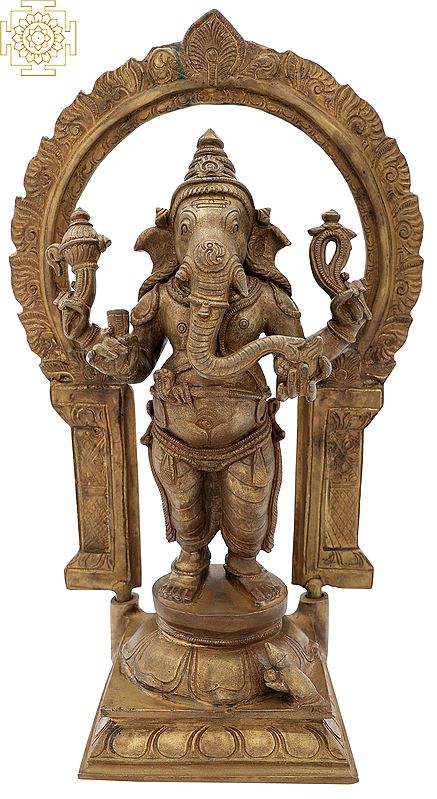
| Specifications |
| ZEP356 | |
| BRONZE | |
| Height: 11 inch | |
| Width: 7 inch | |
| Depth: 4 inch | |
| Weight 3 kg |
| Delivery and Return Policies |
| Returns and Exchanges accepted within 7 days | |
| Free Delivery |
A standing Ganesha figure to add to the auspiciousness of your home or office temple. Sculpted from bronze, it depicts the son of Shiva in chaturbhujadhari form.
The Sanskrt word ‘chaturnhujadhari’ translates to one who is possessed of (‘dhari’) four (‘chatur’) arms (‘bhuja’). Each of those four hands bear a signature implement.
Clockwise from the posterior right: a small, handheld goad to strike fear into the heart of the adharmee; a noose to throw around them and bring them back to the path of dharma; a modaka, of course, which the tip of His trunk gently cradles; and the bit of broken tusk which He used as a pen to pen the Mahabharata.
A washed-out texture characterises the medium of bronze. The colour is a deep, ochre monotone that would go with a wide range of indoor paint. In unison, the colour and the finish exudes the warm earthiness characteristic of India. A composure of wide-eyed wonder and a decidedly childlike form as well as language of form.
It is the childlike innocence and wisdom of Lord Ganesha that makes Him so widely adored and venerated. The feet of the Lord rests on the pistil of an upturned lotus. At its downward-facing mouth is His vahana, the humble mouse, which holds a laddoo in offering to its master.
A compact, quadrilateral plinth with lotus petal engravings. The pillars that rise behind the figure and the aureole that sits on top of it are fashioned in keeping with the ancient temple iconography of the South.
Send as free online greeting card

Visual Search